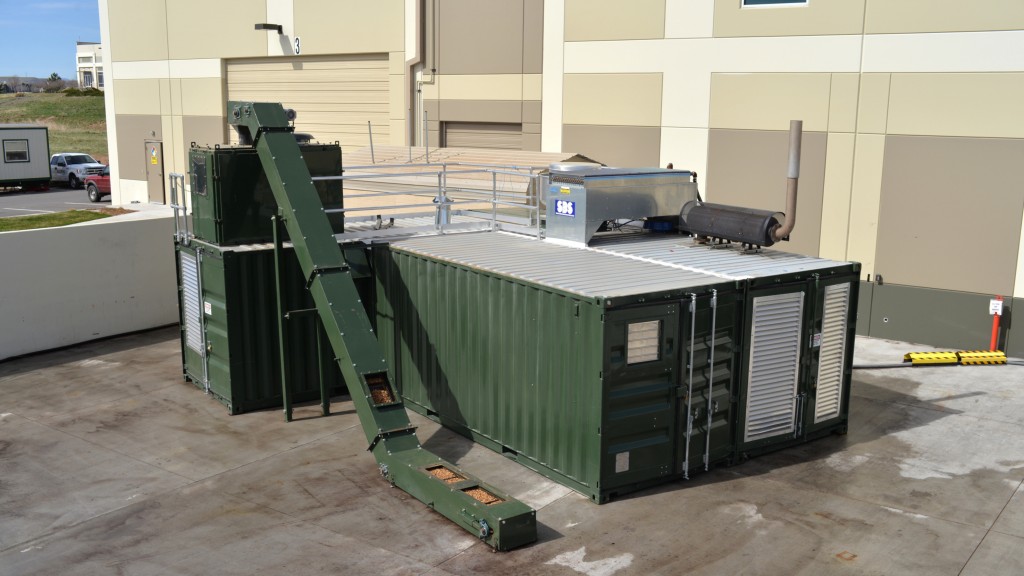
Talk to someone not in the waste industry and you'll find they're stunned that in 2019, we're still burning and burying waste, or even just allowing it to rot on the forest or orchard floor, or on the farmer's field. These methods result in losing the valuable energy found in waste - energy which can both help to relieve the pressure on rapidly diminishing fossil fuels and help reverse the harmful trends of global warming and climate change. Climate change is no longer a problem for the next generation. We simply must do better and do better now.
We can start by converting otherwise unrecoverable "waste" into renewable bioenergy. Multiple energy, environmental and economic problems can be met through the advanced thermal conversion of biomass, processed municipal solid waste and other problematic waste streams into sustainable, clean, carbon-negative energy. This energy takes the form of power and heat, and the conversion process can produce low-carbon products such as fertilizer made from, or enhanced by, high-quality biochar, a by-product of the waste-to-energy conversion process. Advanced liquid fuels can also be produced, which need neither blending nor engine modifications and burn cleaner than conventional fuels.
Today's bioenergy - not to be confused with the incinerators and biofuel failures of the past - has enormous potential to provide clean, carbon-negative energy on-site where waste is generated. It can be reused on-site or locally, at the community level, where it makes the most sense, and can be returned back into an operation quickly. The solution provides energy at lower cost than traditional alternatives and it be connected directly to the needs of consumers. Additionally, bioenergy conversion plants can operate on-grid, off-grid or as a micro-grid.
Increased use of bioenergy created from advanced thermal conversion will help put an end to burning or landfilling wastes, particularly biomass, green and organic waste, and in the process, keep millions of tons of carbon out of our environment every year. Virtually overnight, the use of bioenergy can render a business which was once a polluter, into a completely carbon-negative operation. It also creates jobs up and down the employment value stream.
Below: SynTech's BioMax installation at Dixon Ridge Farms. Read more about it at this LINK>
Three critical requirements
Below are three of the critical requirements I believe can help this emerging new carbon-negative bioenergy industry achieve its full potential. These same criteria can be used at the project-level to help determine if an individual project can be considered viable.
1. Economic viability
Projects need to be small-scale and modular. This can only be achieved with technology which can be both immediately and imminently scalable from 150 kWe to 15 MWe or more without any new technology or scale-up risk. Building a large centralized energy plant requires too much capital, too much land, too much time, too much feedstock, too much financial risk and often subsidies. There are commercially proven small-footprint carbon negative solutions which can be financed by virtually any waste producer or energy consumer, from agricultural operations to hospitals. Small-scale modular bioenergy systems can be set up quickly and can produce energy reliably, at grid parity or better, from day-one.
2. Feedstock flexibility
Bioenergy systems must be able to process a wide range of feedstocks. Building a bioenergy plant that can only process one type of feedstock reduces the economic viability of the project. Feedstock availability varies greatly from region to region. To achieve widespread adoption of the new bioenergy economy requires maximum feedstock flexibility.
3. Carbon negativity
Bioenergy systems must do more than just deliver clean power. They need to operate at a carbon-negative level, processing more carbon from the environment than they produce, and displacing or sequestering as much environmental carbon as possible. Advanced thermal conversion adds to this benefit by sequestering residual carbon from the feedstock in the form of high-value biochar, which can be used as a soil amendment or organic fertilizer, improving soil nutrients and reducing irrigation requirements. This lowers one of agriculture's highest expenses: acquiring and moving water.
If we as an industry are to make serious progress in clean renewable energy from biomass and other wastes and, in so doing, lead the attack on global warming and climate change, we need to develop a shared understanding of what constitutes a successful approach. Getting the criteria right will allow everyone - business leaders, policy makers, stakeholders and communities - to evaluate new bioenergy projects on the basis of their true merits, allowing us to make better decisions and achieve better outcomes.
Wayne McFarland is chairman and CEO of SynTech Bioenergy.
This article was originally published as above, in the May/June 2019 edition of Recycling Product News, Volume 27, Number 4.



